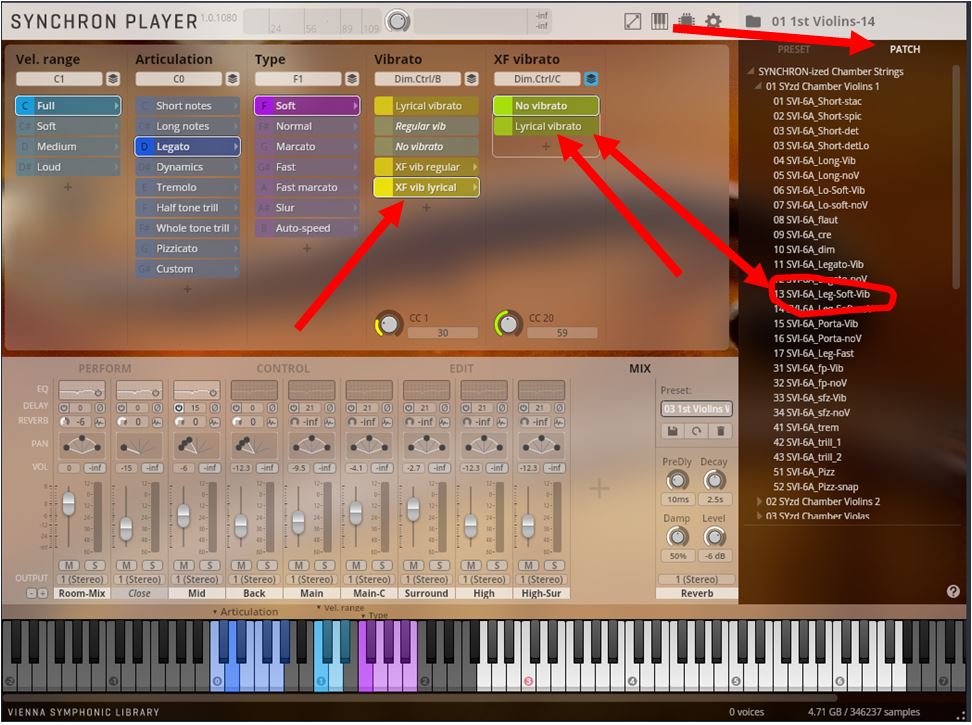Today something crossed my mind and I did some experiments.
I'm sure this idea is not world changing, but it can be a tool to put some subtile sound variations in the Synchron Strings vibrato. And perhaps it turns out to be not so good idea, that's also possible.
I asked myself: is it possible to put a synchron-ized Chamber Strings patch in a Synchron Strings instance, e.g. first violins?
The answer is: yes, but it will sound only on the first channel (room-mix).
I did some tests with Vibrato XF. I used for this the first violins of Synchron Strings.
I put a C.S. vibrato patch in one of the two child slots of the "XF lyrical vibrato slot" , the lowest one (the one with the lyrical vibrato patch). See image. (To let this work properly it is important to put first in both child slots a synchron strings patch, and after that you can place a synchron-ized CS patch in the slot you want. The crossfading doesn't work correct, when you put in an empty slot immediately a synchron-ized CS patch).
When you mix the C.S. patch not to far with the non vibrato patch (in other words, when you don't push the controller higher than perhaps 75-80, of course your ears decide), you kept the sound of all the microphones, but mix it up with the C.S. patch, so some vibrato comes in. It could be that there are situations, that this sounds better than the use of the lyrical (or regular) vibrato patch of Synchron Strings. With situations I mean among others: velocity and pitch.
I made also a Vibrato XF slot with a regular vibrato patch of Synchron S. in the highest child slot and a legato patch of C.S. in the lowest one. Anew I took care that I didn't set the controller to high, so that the sound of the microphones of the Synchron Strings patch didn't disappear. The nuances one can bring in the tone are subtile, but I can imagine that it can give just a little more expression in a tone. Of course one can create one or more new XF Vibrato slots, so that one can use all possibilities (the regular possibilities and the new created)
